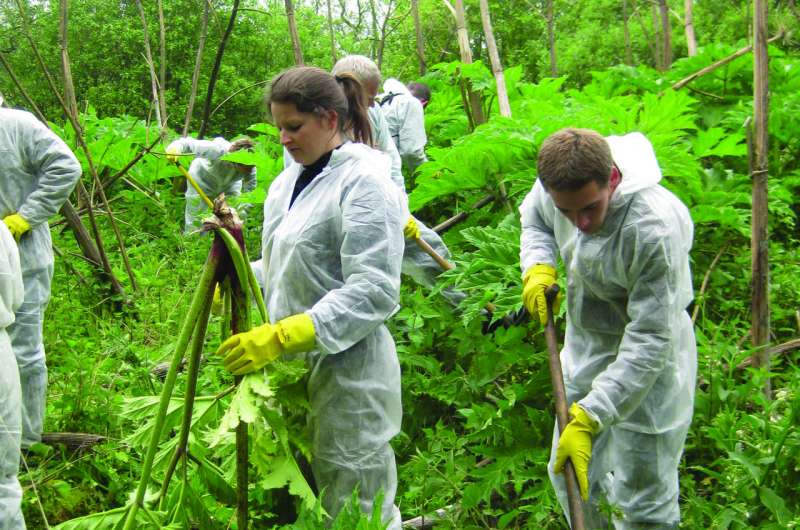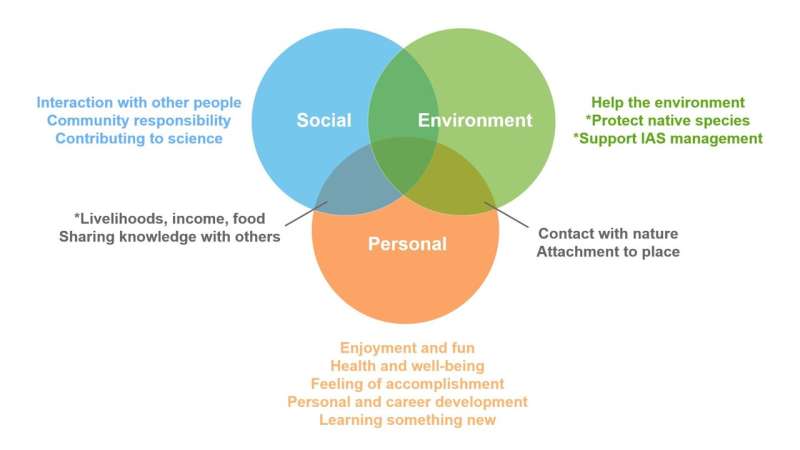Concerned about native biodiversity, volunteers join the fight against invasive alien species

Public involvement is an important component of many invasive species programs. Volunteers perform early detection of invasive species, track their spread, and also play active roles in their capture, control and removal. Their involvement helps raise awareness of invasive species and encourages support for their management. Finding, recruiting and retaining a corps of committed volunteers, however, can be a challenge. Understanding the reasons why people participate in invasive species projects is critical for successful volunteer recruitment and the long-term sustainability of volunteer-driven projects.
A multidisciplinary team of invasion biologists and social scientists from the network funded by the COST program, led by Ana Anđelković, used a meta-synthesis approach to analyze volunteer motivations in the monitoring and control of invasive alien species. They published their study in the open-access journal NeoBiota.
"Citizen participation in invasion monitoring and control is clearly a booming business. Yet almost nothing is known about why volunteers engage in such programs. We wanted to close that knowledge gap and make recommendations to project managers to keep their volunteer armies engaged, which is often as hard as tackling the invasive species itself. For this, we mined the literature for motivation statements," explains Anđelković.
Searching through literature, the team found 264 motivations, which they then classified into 15 broader motivations. Generally, motivations fit three broad themes: reflecting environmental concerns, social motivations, and personal reasons.
"Some motivations, such as being in the great outdoors, making friends, taking care of a particular nature reserve, learning something new and having fun, are in line with other forms of environmental volunteering. They apply to many projects where citizen-scientists help to record sightings of invasive species around the world. But volunteers in invasive species projects seem to be unique in their desire to take part in the control and eradication of these species, to protect native biodiversity in the places they value," says Anđelković.

"For instance, on Scottish seabird islands, people helped remove invasive tree mallow to protect the breeding puffins. In South Africa, volunteers want to rid the unique Fynbos of invasive trees. In some regions of the world people also take part in harvest management for food provision, as is the case with lionfish in the Caribbean or common carp in Australia."
However, the relative lack of published studies and invasive species projects that have actually measured volunteer motivations was striking. "Motivations change over time and the reasons why people remain active in invasive species management are often not the same as their initial self-reported motivation," they comment. "Also, the social implications for people taking part in eradication campaigns that involve the killing of invasive animals, or the cutting of trees to prevent the spread of insect pests, are not sufficiently understood."
In conclusion, the authors call upon researchers and project managers to gather data on participant motivations in collaboration with social scientists, especially when volunteers are also involved in control. This way, projects can be inclusive of diverse groups of people, tailoring tasks and roles to everyone's interests and capabilities.
More information: Ana A. Anđelković et al, A review of volunteers' motivations to monitor and control invasive alien species, NeoBiota (2022).
Journal information: NeoBiota
Provided by Pensoft Publishers



















